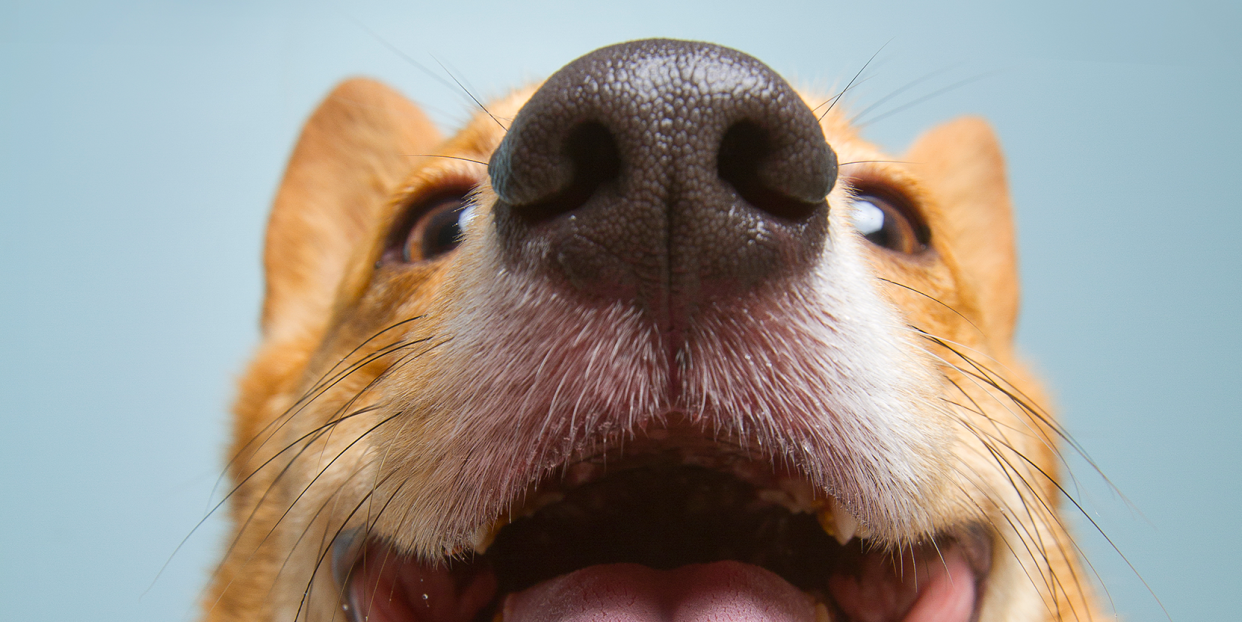Yes, Your Pet Regulates Your Nervous System

This time last year, I had just moved into a very old house that was still under construction. I was six months pregnant. I wasn’t sleeping. I had barely unpacked a single box, and my stress was sky-high. The only thing that helped was when my partner of 11 years would sit next to me and give me a steady, loving gaze. I’m not talking about my husband here (although he’s pretty great). I’m talking about my cat.
Milly is a delicate calico whose picture ought to be in the dictionary next to aloof. Knowing that she deigned to sit near me made me feel better. But that’s not the only reason her presence relaxed me: Interacting with an animal has a real, measurable impact on our nervous system, particularly our stress response.
Just ask Maggie O’Haire, PhD, associate dean for research at the University of Arizona College of Veterinary Medicine. Human-animal interaction is her specialty, and she says the calming effect is partly due to what’s called the biophilia hypothesis. “Evolutionarily, we grew up around animals in nature. Our body is primed to pay attention to them. Animals can provide a positive external focus of attention,” she says. By positive, she means uplifting and pleasing compared with the negative or aversive experience of seeing modern, man-made stimuli like trash or concrete. “That interaction creates changes in our neurobiology of stress and the way our body reacts to the environment around it.” She adds, “In some ways, it’s akin to mindfulness.”
Imagine gazing lovingly at your fur baby. It’s similar to counting your breath or repeating a mantra. You’re observing something tangible and outside of yourself rather than chasing your ricocheting thoughts. That helps regulate your nervous system, which slows your heart rate and lowers your blood pressure.
Researchers don’t fully understand the physiological cascade that leads from my hand nuzzling Milly to my pulse relaxing—not yet, anyway. But they’re getting a clearer picture of how two hormones, cortisol and oxytocin, figure in.
The stress hormone cortisol is supposed to rise when we need a jolt of energy, like first thing in the morning. When we’re chronically stressed, it stops being able to do that properly. (It’s kind of like when you plonk a piano key too hard for too long and it goes flat.) O’Haire’s ongoing research, including this 2022 study, shows that pairing veterans who suffer from PTSD with a service dog helps them get that morning cortisol rise back. Her team took drool—oops, saliva—samples from the humans to confirm and gauge the effect. Such benefits are more than heart-warming; they’re hard scientific data that helps secure funding for service dog programs, so more people in need can feel the puppy love.
New research also tells us that while simply looking at images of animals calms us, petting is the way to true purr-vana. Patricia Pendry, PhD, an anthrozoologist and professor in Washington State University’s department of human development, has shown that interacting with a dog or cat soothes college students’ exam-week nerves. She and her coauthor randomly divided students into four groups: One petted service dogs and cats at an event on campus, one watched others petting the animals, one looked at images of the same dogs and cats, and one was “waitlisted.” Pendry took saliva samples from each student several times, starting that morning and ending after the service-animal event. The group that petted the animals experienced a statistically significant cortisol decrease after just 10 minutes.
That’s where the other key hormone, oxytocin, comes in. Pendry explains: “As you are petting the animal, your body produces oxytocin. People call it the love hormone, but it’s actually a neuropeptide that’s released into the brain.” In response to the presence of oxytocin in the body, cortisol production is suppressed. By petting Mabel or Mr. Mittens, “you down regulate its production,” she says.
Oxytocin also tells both of you that you’re in a safe, nurturing place. It’s essential to mother-child bonding—and, it turns out, human-pet bonding, too. A 2014 study examined fMRI images of brain activation patterns in mothers who looked at photographs of their child and their pet, and found a similar pattern. If your cat curls up on your head at night, like mine does to me, you know this in your heart; science is just catching up. (My question is: Who’s the mom and who’s the baby in this scenario if the cat’s grooming you?) O’Haire’s colleague Evan MacLean, PhD, is studying the role of oxytocin in human-dog interactions extensively; the soothing effect goes both ways. Gregory Berns, MD, PhD, a researcher at Emory University in Atlanta, has trained dogs to sit and stay in MRI machines to learn more.
The more we, ahem, shed light on the bonds between us, the more we learn that pets can truly improve our mental health. It’s therapy that’s warm, fuzzy, and free—in a word, pawsome.
You Might Also Like

